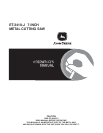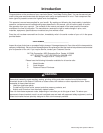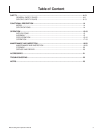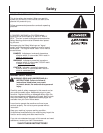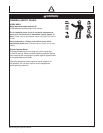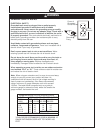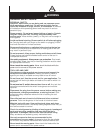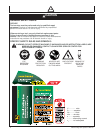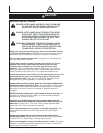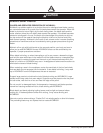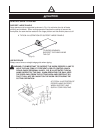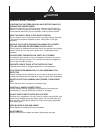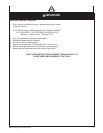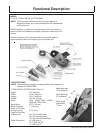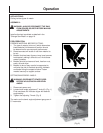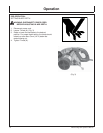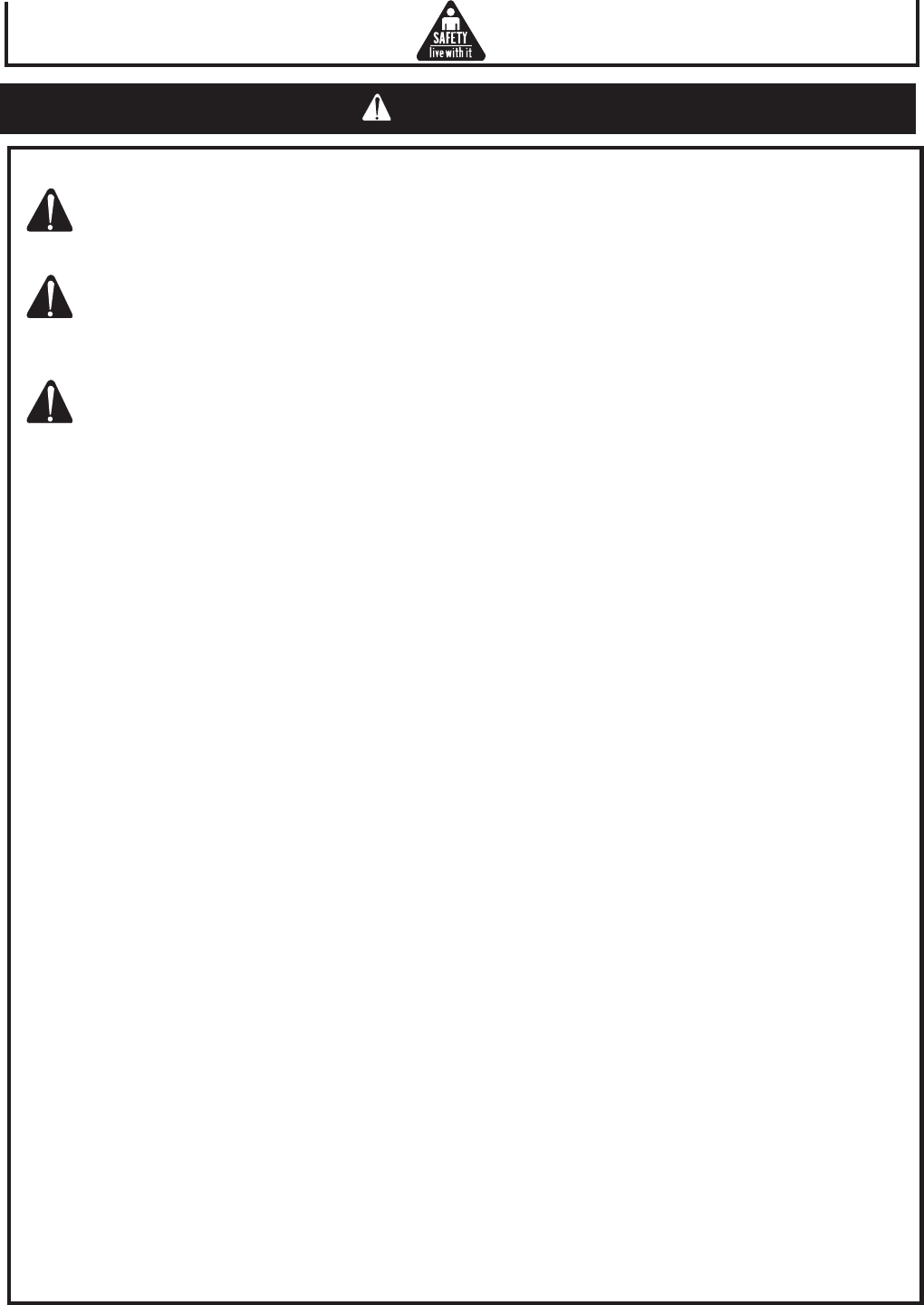
Metal Cutting Saw Operator's Manual 9
CAUTION
SPECIFIC SAFETY RULES:
DANGER: KEEP HANDS AND BODY AWAY FROM AND
TO THE SIDE OF THE BLADE. CONTACT WITH
BLADE WILL RESULT IN SERIOUS INJURY.
DANGER: KEEP HANDS AWAY FROM CUTTING AREA
AND BLADE. KEEP YOUR SECOND HAND ON
AUXILIARY HANDLE, OR MOTOR HOUSING. IF
BOTH HANDS ARE HOLDING THE SAW, THEY
CANNOT BE CUT BY THE BLADE.
WARNING: TO REDUCE THE RISK OF INJURY, CHECK
LOWER GUARD. IT MUST CLOSE INSTANTLY!
HOLD SAW WITH BOTH HANDS. SUPPORT AND
CLAMP WORK. WEAR EYE PROTECTION.
Keep your body positioned to either side of the saw blade, but not
in line with the saw blade. KICKBACK could cause the saw to jump
backwards. (See “Causes and Operator Prevention of Kickback.”)
Do not reach underneath the work. The guard can not protect you
from the blade below the work.
Check lower guard for proper closing before each use. Do not
operate saw if lower guard does not move freely and close
instantly. Never clamp or tie the lower guard into the open
position. If saw is accidentally dropped, lower guard may be bent.
Raise the lower guard and make sure it moves freely and does not
touch the blade or any other part, in all angles and depths of cut.
Check the operation and condition of the lower guard spring. If the
guard and the spring are not operating properly, they must be
serviced before use. Lower guard may operate sluggishly due to
damaged parts, gummy deposits, or a buildup of debris.
Always observe that the lower guard is covering the blade before
placing saw down on bench or floor. An unprotected, coasting blade
will cause the saw to walk backwards, cutting whatever is in its path.
Be aware of the time it takes for the blade to stop after switch is
released.
NEVER hold piece being cut in your hands or across your leg. It is
important to support the work properly to minimize body exposure,
blade binding, or loss of control.
Hold tool by insulated gripping surfaces when performing an
operation where the cutting tool may contact hidden wiring or its
own cord. Contact with a “live” wire will also make exposed metal
parts of the tool “live” and shock the operator.
When ripping always use a rip fence or straight edge guide. This
improves the accuracy of cut and reduces the chance for blade
binding.
Always use blades with correct size and shape (diamond vs.
round) arbor holes. Blades that do not match the mounting hardware
of the saw will run eccentrically, causing loss of control.
Never use damaged or incorrect blade washers or bolts. The blade
washers and bolt were specially designed for your saw, for optimum
performance and safety of operation.



